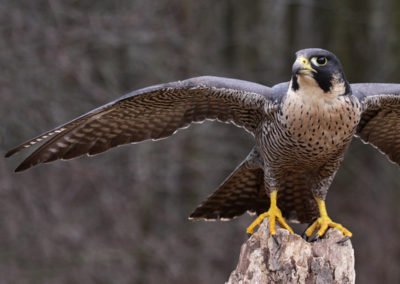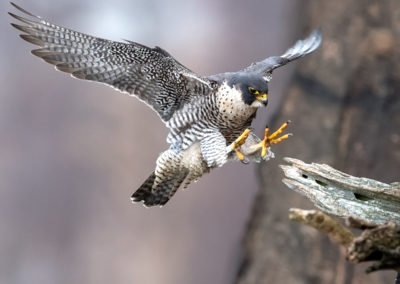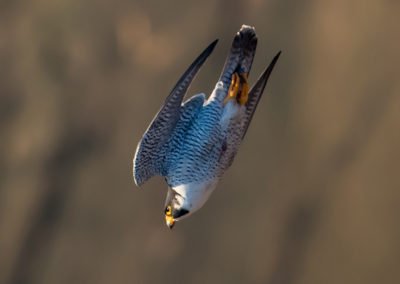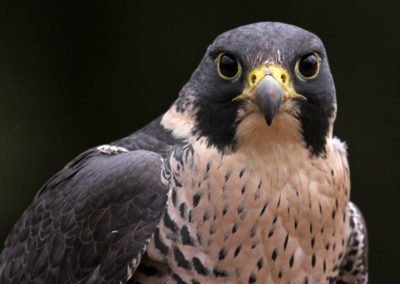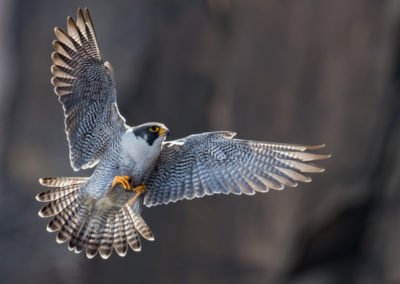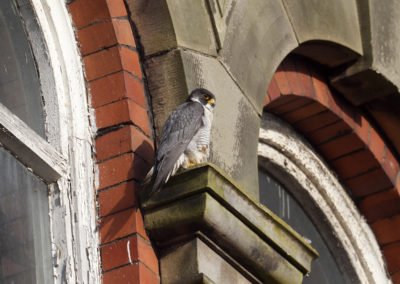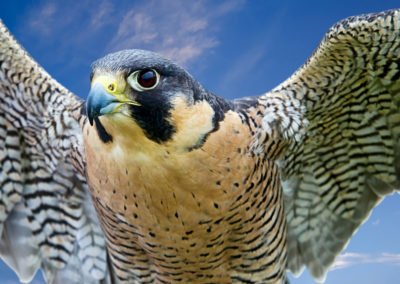For More Information
Baker, JA. 1967, reissued 2017. The Peregrine. HarperCollins.
Pagel, JE, Anderson, CM, Bell, DA, Deal, E, Kiff, L, McMorris, FA, Redig, PT, &
Peregrine Falcon. Hawkwatch International.
Peregrine Falcon
Falco peregrinus
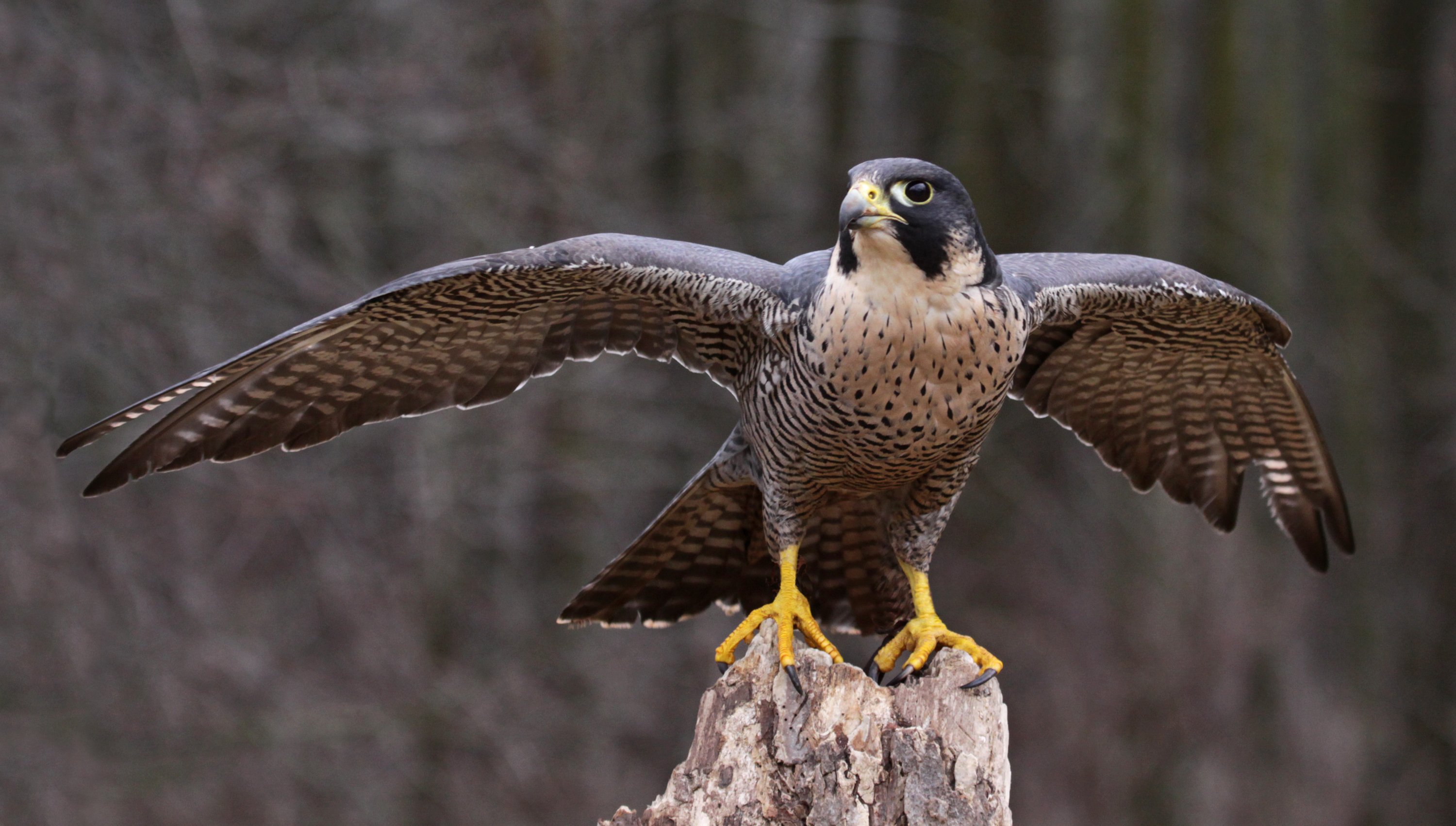
Adult Peregrine Falcon.
Chris Hill, Shutterstock.
The aerial prowess of the Peregrine Falcon has been admired for millennia. Flight studies have clocked them at over 200 miles per hour in high-speed steep, vertical dives (“stooping”), making Peregrines the fastest animals on the planet. Because of their extraordinary speed and maneuverability, Peregrines are devastating hunters of birds on the wing. In medieval falconry terminology, “falcon” referred specifically to a female Peregrine. Male Peregrines were called tiercels (“third”), because males are about one-third smaller than females.
Urban History
Peregrines are one of the most common birds of prey, but this was not always the case. The pesticide DDT caused
Although wintering females had occasionally been seen in downtown Seattle in the early 1990s, it was not until March 1994 that two observers, Ruth Taylor and Ed Deal, independently discovered an adult male and a juvenile female courting downtown. The pair nested at 1201 Third Avenue, then the Washington Mutual or WaMu building. Stewart and Virginia, named after downtown streets, became the first breeding pair of Peregrine Falcons in Seattle in the post-DDT era.
Peregrines had made a phenomenal comeback. By 1999, Peregrines had recovered to the extent that they were taken off the Endangered Species List. Five to seven pairs now nest in Seattle each year, which is probably the city’s carrying capacity for this species.
Fledgling Problems and Mortality
Peregrines are regularly found in appropriate habitat in Seattle. In the wild, “appropriate habitat” is a cliff. In cities, Peregrines favor bridges and skyscrapers as their urban cliffs. These structures host an abundance of pigeons and other avian prey. They also provide shelter from the elements and usually a place to lay eggs.
But Peregrines aren’t able to anticipate problems. Eggs may crack when incubated on too rough a substrate. A crevice may be too small for developing young to have sufficient room to flap their wings in preparation for their first flights. Young birds may fledge into the water or into traffic.
Juvenile Peregrines have a high mortality rate, regardless of whether they nest in wild or urban areas. Predators may take eggs and young from cliff sites, and cliff ledges may be vulnerable to flooding. And urban Peregrines face other challenges. The most common causes of death for Seattle fledglings and juveniles are window strikes, collisions with vehicles, and disease. Pigeons have their revenge: these favored prey items carry an ancient disease, avian trichomoniasis, or “frounce”, which is fatal to Peregrines unless treated promptly.
Naïve young birds may end up in unusual places. Once a recently fledged youngster landed atop a slow-moving train, but an alert observer got an engineer to flush the bird while it was still close to home. And in downtown Seattle, a window-strike-stunned fledgling walked into a FedEx store, much to the amazement of the staff and customers. Both birds escaped harm, but not all young birds are so lucky.
All birds are adults. (1) Chris Hill. (2) Collins93. (3) Collins93. (4) Collins93. (5) Chris Hill. (6) Collins93. (7) Enri. (8) Leena Robinson. All photos from Shutterstock.
